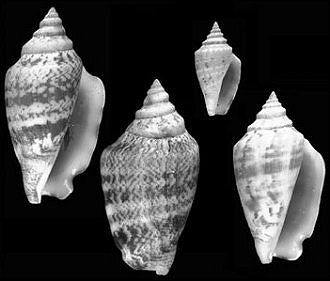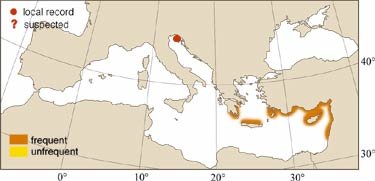
|
Relevant Synonyms
Misidentification
|
|
| photo: S. Gofas / Coll. H. Zibrowius |
|
SHORT
DESCRIPTION
color :
whitish background, and brown markings organized to form unequal spiral bands.
common size :
35 to 45 (common), to 50 mm (max.). |
DISTINGUISHING CHARACTERISTICS
BIOLOGY / ECOLOGY
habitat :
in the Mediterranean, low-energy environments of shallow bays, on mixed (rock/sand/mud) bottoms. |
|
1st
Mediterranean record
|

|
|
DISTRIBUTION
|
ESTABLISHMENT SUCCESS
speculated reasons for success :
|
|
|
MODE OF
INTRODUCTION |
IMPORTANCE TO
HUMANS |
|
KEY
REFERENCES
|
|
|
 Strombus (Conomurex) decorus raybaudii (Nicolay, 1986) [southern coast of Turkey]
Strombus (Conomurex) decorus raybaudii (Nicolay, 1986) [southern coast of Turkey]